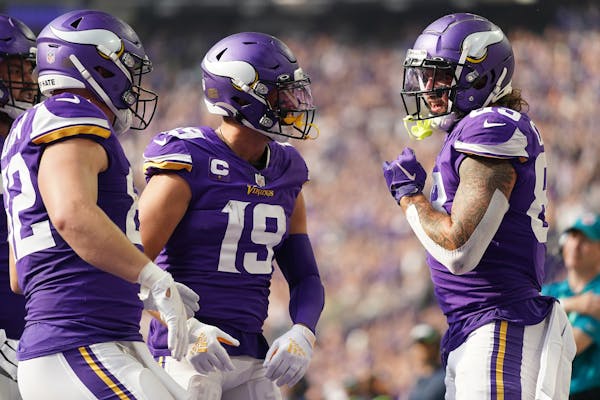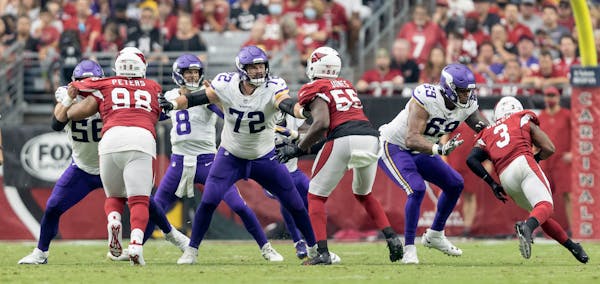As the Vikings' Klint Kubiak and the Browns' Kevin Stefanski prepare to call plays against each other this week, the longtime friends do so with similarities that extend beyond the high-powered offenses on display Sunday at U.S. Bank Stadium.
They both started their NFL coaching careers as entry-level Vikings employees, with Stefanski — now the Browns head coach — hired as Brad Childress' personal assistant in 2006. Seven years later, Stefanski sat in as Kubiak interviewed for a quality control job. Impressed by his acumen, Stefanski recommended Kubiak to then-coach Leslie Frazier, who hired him.
"Klint and I from the very beginning hit it off," Stefanski said this offseason. "Similar backgrounds: I've got all brothers; he's got all brothers; we went to Jesuit high schools; we played safety in college. We very quickly, I guess, became fast friends. Even when he left and went to [Kansas in 2015], we stayed in touch."
They also share little interest in discussing their reunion, trying to put the focus on two talented rosters that Stefanski, 39, and Kubiak, 34, orchestrate with versions of a run-oriented system many of the game's young minds have embraced.
"There are so many things I could say positive about Kevin, and what he's done for me professionally and as a friend," Kubiak said Thursday. "But come Sunday, we're just focused on our own teams."
Through three games this season, Kubiak and Stefanski are leading top-10 offenses, which comes to little surprise to those who have played for both. Running back Dalvin Cook sees similarities in how they relate to players, saying Stefanski made life easy on and off the field during his 21 games as Vikings coordinator between 2018 and 2019.
"That was his great trait," Cook said this week. "He knows how to deal with his players. He knows how to communicate with his players and knows how to turn us loose in the game. He knows how to put us in certain positions to play free when we're in the game."
"Klint is the same way," Cook added. "Klint knows how to turn us loose, too. It's the same thing. I just feel like those young minds know how to come up with creative things and communicate with your players."
Gary Kubiak's offensive schemes, shaped with Mike Shanahan and mimicked across the league from San Francisco to Green Bay, were the foundation for Stefanski and Klint Kubiak in Minnesota. But for being Gary Kubiak's oldest son, the younger Kubiak's path was varied while working for three different head coaches in four years between Texas A&M and Kansas before joining his father in Denver and then Minnesota.
Entering his first year as play-caller, Klint Kubiak said he wanted to mold his offense around many influencers, from his father to Kevin Sumlin and Kliff Kingsbury. As soon as quarterback Kirk Cousins arrived this spring, he noticed a little Stefanski, too.
"Both of them are focused, attention to detail, and they're full of substance," Cousins said. "This league is filled with a lot of flash, and you play in it long enough and you see guys who got a lot of flash and not a lot of substance, and that wins the short game, but it doesn't win the long game. And Klint and Kevin are two guys with a lot of substance."
The proof is on the field for the Vikings and Browns — offenses with strong arguments for being the NFL's best running game. There are only 20 running backs averaging at least 5 yards per touch through three games (minimum 30 touches); four will be on the turf Sunday: Cook, Alexander Mattison, Nick Chubb and Kareem Hunt.
Laying the blueprint for top-flight talent is a popular offensive scheme that attacks with wide-zone runs and play-action bootlegs meant to look the same to defenses.
"It's about the O-line, the run game," Kubiak said. "Being able to run the football, and that sets up everything for your offense."
But these are only pillars, and offensive coaches such as the Rams' Sean McVay, Stefanski and Kubiak mold the strategy around their preferences and rosters. Kubiak has pivoted the Vikings to a three-receiver offense, something his father ran at a league-low 29% last year, according to Sharp Football Stats.
The Vikings offense has three receivers on 51% of plays this season, dictated in part by the loss of tight end Irv Smith Jr. (knee) to injured reserve. Conversely, only four offenses use three receivers less than the Browns' 39%.
Yet the Vikings and Browns are among league leaders running on first and second downs. And they do so differently, with the Vikings using a predominantly zone-blocking offense. The Browns employ some gap-blocking schemes under offensive line coach Bill Callahan.
"This offense has tentacles," Stefanski said. "Where there are similarities among all those teams, there are profound differences as well. It's a great system and at its core, we all share some of those mainstay principles of the marriage of the run and pass, but I'd tell you there's really — if you really look closely, everybody is kind of doing their own version of that."

For Wild's leader, playoff time and payoff time arrive together
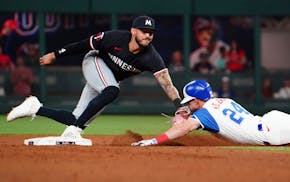
Twins' skid against the Braves reaches double digits with 4-3 loss
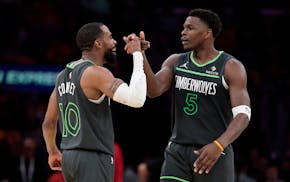
Timberwolves get on a roll and make Game 1 a 117-95 rout of the Lakers
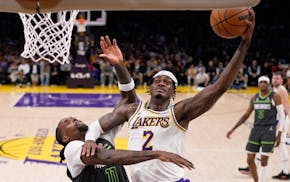
Timberwolves 117, Lakers 95: 10 points about Game 1 in the NBA first-round playoff series



